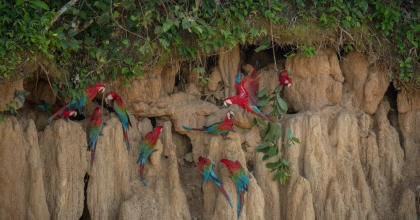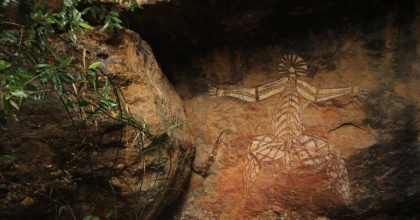Amazing Things To Do in Manu National Park

Take a Night Walk
Not for the chicken heart, an other-worldly walk into the jungle after twilight offers the chance to spot the sight of after-dark animals that are not active during the day. At night, many animals like insects and frogs come out. You can only see them by taking a night walk.

Visit Lake Salvador
Far down in the reserved zone and away from civilization, Lake Salvador is the territory of a large number of animal and bird species and a tour of the lake is a great chance to spot some of the more evasive members of the park. Animals to search for include monkeys, caiman, capybara, and river turtles.

See Giant Otters
One of the most magnificent species to be discovered in the area is the giant otter, which can develop to 1.8m in length. They live in family groups and are found in many of the lakes in the region. Travelers have the opportunity to see them hunting, eating, and playing together in their native environment.

Visit Lake Otorongo
Lake Otorongo is another not-to-be-missed place and it is a residence of a wide range of wildlife. The lake has a uniquely built tower for catching sight of birds and animals.

Take a River Tour
An impressive way to fully know the park is to take a tour of the river. Well-informed guides can help spot wildlife that would otherwise be very difficult to witness.

Camp in the Jungle
To fully explore the jungle and take the vibes, go camping in the jungle, encircled only by darkness and the sounds of the night.

Spot The Cock-Of-The-Rock Bird
The cock-of-the-rock is recognized as Peru's national bird and is popular for its bright red color and glitzy courtship dance. A trip to the Manu cloud forest is the best opportunity to catch a glimpse of these birds and to spot the detailed dance they perform in an endeavor to attract a partner.

See Macaws at Clay Licks
One of the spotlights of any visit to Manu National Park is a trip to one of the macaw salt licks where numerous brightly colored birds gather to get salt and minerals important to boost their diet. A must-see experience for anyone with even a fleeting curiosity in ornithology.

Go to The Petroglyphs of Pusharo
Go to Palotoa-Teparo, a Matsiguenka native community, and take a stay in the Pusharo Lodge. There are excellent nature walks here but the primary attraction is the petroglyphs of Pusharo, puzzling long-lived rock carvings situated near the settlement. The local community arranges visits but authorization must be taken in Cusco in advance.
How To Get to Manu National Park
By land
Buses operate from Cusco to Pilcopta, Atalaya, Salvacíon, Shintuya, and Itahuania, settlements within the culture zone. The road ends after Itahuania and further travel into the reserved zone is by taking a boat. Salvacíon is the biggest town and makes a good spot to stay for the night to recess the journey. The drive to Salvacíon takes 10-12 hours. From Itahuania, it is more than 55 Km to the village of Boca Manu and the way into the reserved domain.
By Air
There is now an airstrip at Boca Manu and it is achievable to fly directly from Cusco. The flight takes over 40 minutes. From Boca Manu, further travel is by boat.
The ideal time to visit Manu National Park is during the time of dry season, which falls from May to August. Although it can be demanding to reach, its inaccessibility makes Manu National Park in Peru one of the excellent locations in the world for close and intimate encounters with some of the miracles of mother nature.